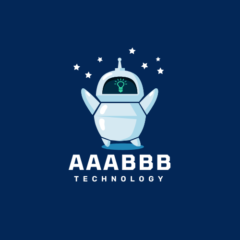Introduction
Computer vision has emerged as one of the most transformative technologies in recent years, revolutionizing industries ranging from healthcare to automotive and beyond. By enabling machines to interpret and analyze visual data, computer vision applications are unlocking new possibilities for automation, decision-making, and innovation. This article explores the key areas where computer vision is making a significant impact, highlighting its potential to reshape our world.
1. Healthcare: Enhancing Diagnostics and Treatment
Computer vision in healthcare is revolutionizing how medical professionals diagnose and treat diseases. For instance, AI-powered imaging tools can analyze X-rays, MRIs, and CT scans with high accuracy, detecting early signs of conditions like cancer or cardiovascular diseases.
Key Applications
- Disease Detection: Algorithms trained on vast datasets can identify patterns invisible to the human eye.
- Surgical Assistance: Computer vision helps guide robotic surgeries, improving precision and outcomes.
- Drug Development: Visual analysis of molecular structures accelerates the discovery of new treatments.
Learn more about AI in healthcare.
2. Autonomous Vehicles: Driving the Future of Transportation
Autonomous vehicles rely heavily on computer vision to navigate and make decisions in real-time. Systems like Tesla’s Autopilot and Waymo use cameras, lidar, and sensors to detect obstacles, read traffic signs, and predict pedestrian movements.
Key Features
- Object Detection: Identifying cars, pedestrians, and road signs with high accuracy.
- Path Planning: Using visual data to map safe routes for vehicles.
- Adaptive Cruise Control: Maintaining safe distances from other vehicles.
Explore the latest advancements in autonomous driving.
3. Retail: Personalizing Shopping Experiences
In retail, computer vision is enhancing customer experiences and optimizing operations. For example, facial recognition systems analyze shopper demographics to tailor advertisements, while inventory management tools track stock levels in real-time.
Key Applications
- Demand Forecasting: Using visual data to predict product popularity and restock efficiently.
- Loss Prevention: Detecting theft or shoplifting incidents in real-time.
- Virtual Try-Ons: Allowing customers to see how clothes or accessories look on them before purchasing.
Discover how AI is reshaping retail.
4. Security and Surveillance: Strengthening Public Safety
Computer vision plays a critical role in enhancing security systems, from facial recognition at airports to smart surveillance cameras that detect suspicious activity. These tools help prevent crimes and ensure public safety.
Key Features
- Facial Recognition: Identifying individuals in crowded spaces with high accuracy.
- Behavioral Analysis: Detecting anomalies like loitering or aggressive behavior.
- Crowd Management: Monitoring foot traffic to prevent congestion or stampedes.
Learn about the ethical implications of facial recognition.
5. Industrial Automation: Streamlining Manufacturing Processes
In manufacturing, computer vision is streamlining operations by automating quality control, assembly lines, and defect detection. For example, robots equipped with visual sensors can inspect products for flaws or sort components with precision.
Key Applications
- Defect Detection: Identifying imperfections in materials or finished goods.
- Process Optimization: Analyzing workflows to reduce waste and improve efficiency.
- Robotics Control: Guiding machines to perform complex tasks with accuracy.
Explore the future of industrial automation.
Conclusion
Computer vision is a powerful tool that is reshaping industries by enabling machines to see, understand, and act on visual data. From healthcare to retail, its applications are vast and growing rapidly. As the technology continues to evolve, it holds immense potential to solve real-world challenges and drive innovation across sectors.
FAQ
Q1: What industries benefit most from computer vision?
- Healthcare, automotive, retail, security, and manufacturing are among the key beneficiaries.
Q2: How does computer vision improve healthcare outcomes?
- By enhancing diagnostic accuracy, accelerating drug discovery, and assisting in surgeries.
Q3: Is facial recognition widely used for security purposes?
- Yes, it is commonly employed in airports, public spaces, and retail environments to enhance safety.
Key Takeaways
- Computer vision is a versatile technology with applications across multiple industries.
- Its adoption is growing due to advancements in AI, data processing, and sensor technologies.
- Ethical considerations, such as privacy and bias, must be addressed as the technology expands.
By leveraging computer vision, organizations can unlock new opportunities for efficiency, innovation, and growth, making it a cornerstone of modern technological progress.

Leave a Reply